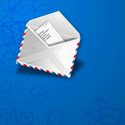Creating Effective Welcome Emails
 It’s been known for a while that there’s one kind of email that always produces a higher response rate than any other: the first one. It’s the beginning of a new relationship, subscribers are happy to learn more about the company that’s contacting them, and they’ve yet to be burned by offers they don’t want.
It’s been known for a while that there’s one kind of email that always produces a higher response rate than any other: the first one. It’s the beginning of a new relationship, subscribers are happy to learn more about the company that’s contacting them, and they’ve yet to be burned by offers they don’t want.
They’re willing to read the welcome message, and they’re willing to click on it too.
According to one recent survey by Experian, a research firm, open rates of welcome emails are typically around 57.8 percent with clickthrough rates of 14.4 percent. Other messages sent by the same company can expect open rates as low as 14.6 percent and clickthroughs of 2.7 percent.
That makes that first email vital. Get it right, and you can convert the interest that led someone to subscribe into an immediate purchase. Get it wrong, and you’ll waste an opportunity, and have to fall back on that one-in-40-odd reader to turn your list into revenue.
Trust Me, I’m an Email Marketer
And companies often get it wrong. Instead of pulling subscribers back towards the business, they keep them at arm’s length. So the first email that subscribers receive might be just a summary of their registration details, with no offer, no call to action, and no next step except to wait for the next message — which most will ignore. Or worse, it will be about the sender and not about the recipient. It will explain that the company is wonderful, that its products are fantastic and that the subscriber made a great choice by signing up. But it won’t actually show the subscriber any of those things.
That’s what a welcome email should do.
First, it should prove to the subscriber that they were right to trust the company with their email address. It can certainly include registration details — they help to personalize an email and can make it appear important — but it should also provide information that’s useful to the reader such as a tip that helps them to get more out of the service. Netflix’s welcome email, for example, explains how the system works for people who might not be familiar with the company’s process. A retailer could explain how to read product reviews or find bargains on its website.
The message should then re-emphasize the benefits, reminding readers of the lower prices, valuable knowledge or reliable service that they signed up to receive. If someone has taken the time to read the message, it’s worth telling them why they should keep reading it — and why they should be doing business with you.
Include an Action Step
And finally, it should give them somewhere to go. That doesn’t have to be one destination. You can provide a choice of buttons in the email, with perhaps one leading to the store, another to the company blog and a third to a search form. Based on their responses, you’d be able to segment your list further, ensuring that your next emails are based on behavior already taken and not just on the behavior you want them to take.
Your welcome email might be the most effective you send. But with a little care, it doesn’t have to be the only effective email you send.
Main image courtesy of Hollywood101


